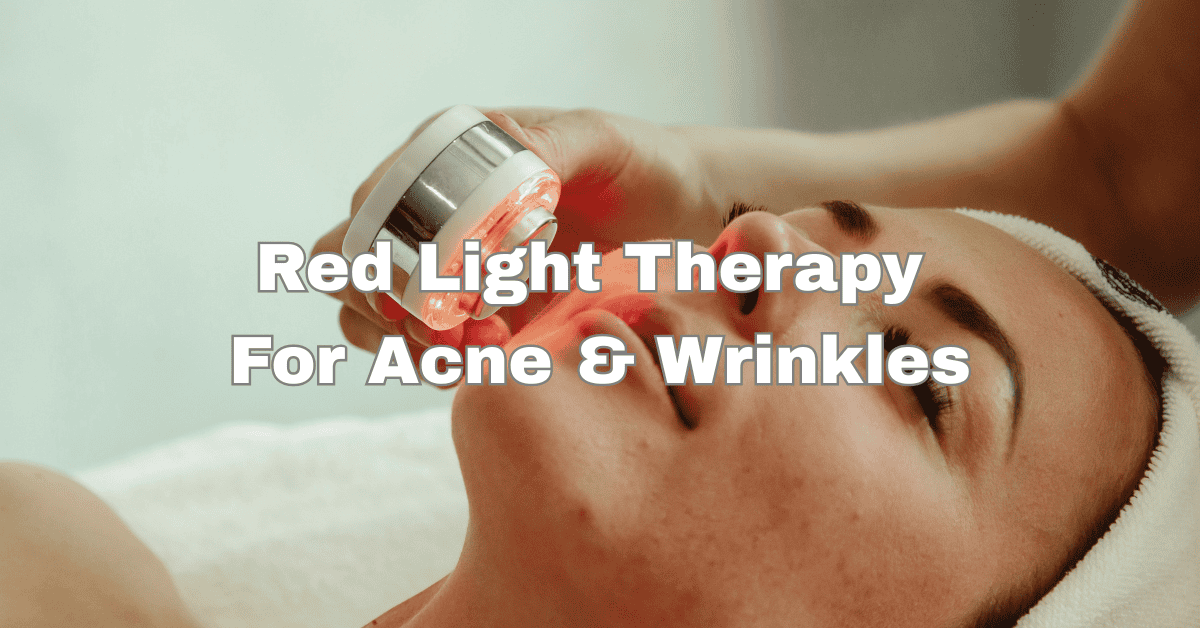Red light therapy for acne and wrinkles is more than a beauty trend-it’s a clinically supported treatment with a growing body of research behind it. If you’re looking for a safe, non-invasive way to address breakouts or smooth fine lines, understanding the science and setting realistic expectations is key.
This guide explains how red light therapy works, what reputable studies reveal, and what kinds of results you can expect-so you can make informed choices for your skincare routine.
Key Takeaways
- Red light therapy stimulates collagen and reduces inflammation to improve acne and wrinkles.
- Clinical studies show significant reductions in acne lesions and wrinkle depth with consistent use.
- Most users see visible results after 4–12 weeks of regular red light therapy sessions.
- At-home red light devices can be effective when used according to expert guidelines.
- Results are gradual-patience and consistency are essential for best outcomes.
How Red Light Therapy Targets Acne and Wrinkles
Red light therapy uses low-level wavelengths of visible red and near-infrared light (typically 630–850 nm) to penetrate the skin. This light energy is absorbed by mitochondria, the “powerhouses” of your cells, which boosts cellular energy and supports natural repair.
Why Red Light Therapy Works
- Boosts collagen and elastin: According to the American Academy of Dermatology, red light energizes fibroblasts-the cells that produce collagen and elastin-helping to firm skin and smooth wrinkles.
- Reduces inflammation: Experts at West Dermatology explain that red light calms inflammatory signals, which is crucial for both acne-prone and aging skin.
- Accelerates healing: Enhanced cellular repair speeds up recovery from breakouts, irritation, and other skin damage.
These mechanisms make red light therapy a versatile option for improving both acne and signs of aging.
Clinical Evidence: Red Light Therapy for Acne
Numerous studies support the use of red light therapy for acne, especially when combined with blue light. Blue light targets acne-causing bacteria, while red light reduces inflammation and speeds healing.
- A systematic review in “Dermatologic Surgery” found that red light therapy (630–670 nm), used twice daily for eight weeks, led to a 66% reduction in inflammatory acne lesions and a 59% reduction in non-inflammatory lesions. Some recurrence was noted after stopping treatment, highlighting the importance of consistency.
- A 2023 analysis of six clinical trials involving at-home red and/or blue LED devices reported an average 45% decrease in acne among users with mild to moderate acne after 4–12 weeks of regular use.
- Dermatologists recommend starting with 3–5 sessions per week, adjusting frequency based on skin response and device guidelines.
Red light therapy is also valued for reducing post-acne redness and supporting the healing of acne scars, thanks to its anti-inflammatory and regenerative effects.
Clinical Evidence: Red Light Therapy for Wrinkles
Red light therapy is equally well-supported for its anti-aging benefits.
- Randomized controlled trials have shown that red and near-infrared LED treatments can reduce wrinkle severity by up to 36% after 4–8 weeks, with improvements in skin elasticity and texture.
- Histological studies confirm an increase in collagen and elastic fibers after red light therapy, resulting in firmer, smoother skin.
- Publications like AARP and Vogue highlight that red light therapy helps rebuild collagen and elastin, leading to fewer fine lines and a more youthful appearance.
Results are gradual, with the most dramatic improvements seen after several months of consistent use.
What Results Can You Expect?
For Acne
Most users notice:
- Fewer active breakouts and less redness within 4–8 weeks.
- Calmer, less inflamed skin, and faster healing of post-acne marks.
- Best results when red light therapy is combined with other acne treatments, such as topical creams or blue light therapy.
For Wrinkles
You can expect:
- Smoother, firmer skin with a visible reduction in fine lines after 4–12 weeks.
- More even skin tone and improved radiance as collagen production increases.
- Continued improvement with ongoing, regular use.
At-Home vs. Professional Red Light Therapy
Both professional and at-home red light therapy devices can deliver results. Professional treatments often use higher-powered devices and may work faster, but at-home devices, when FDA-cleared and used as directed, are effective for most people.
- At-home routine: Most devices recommend 10–20 minute sessions, 3–5 times per week.
- Professional treatments: Offer higher intensity and shorter sessions but require clinic visits.
Dermatologists recommend choosing reputable brands and following the manufacturer’s instructions closely for safety and effectiveness.
Safety and Best Practices
Red light therapy is considered safe for most skin types and tones when used as directed. To maximize results and minimize risks:
- Start slow: Begin with shorter sessions and increase as your skin adapts.
- Protect your eyes: Wear protective goggles, especially for facial treatments.
- Be consistent: Regular use is key for noticeable improvements.
- Consult a dermatologist: Especially if you have a medical condition, are pregnant, or take medications that increase light sensitivity.
If you have a history of photosensitivity, active skin infections, or are taking light-sensitizing medications, consult your healthcare provider before starting red light therapy. For more on safety, see our article: Is Red Light Therapy Safe for Your Face? 5 Risks Explained.
Conclusion
Red light therapy offers real, research-backed benefits for both acne and wrinkles. By stimulating collagen production, reducing inflammation, and supporting skin healing, it can help you achieve a clearer, smoother, and more youthful complexion. Results are gradual and depend on consistency-most people see visible changes after several weeks of regular use.
At-home devices make this technology accessible, but always follow expert guidelines and consult a dermatologist if you have any concerns.
To get started, choose a quality device, commit to a regular routine, and track your progress. For more guidance on routines, device selection, and safety, explore our complete beginner’s guide to red light therapy for the face. Your journey to healthier, more radiant skin begins with science-and a little patience.











Leave a Reply